Parkswood Cotham
Houses within 5km of this house
Displaying 36 houses.
Houses within 5km of Parkswood Cotham
Displaying 36 houses.
| House name | Description | |
|---|---|---|
| The Mount | Nicholas Mahon Power held this unocupied property at the time of Griffith's Valuation when it was described as a "herd's house" and valued at £10 12s. A ruined folly still exists adjacent to the site. | |
| Ballygunner Castle | In 1848, John Phelan was leasing this property from John P. Fitzgerald, when it was valued at £16 8s. The National Inventory of Architerctural Heritage cites it as a building of national importance due to its combination of a medieval castle site with a seventeenth century house. The building is still extant. |
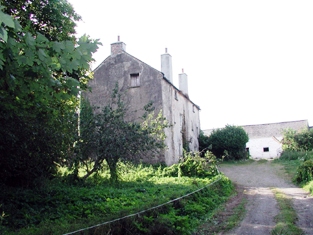
|
| Mount Druid (Gaultiere) | William Roberts was leasing this property from the Marquis of Waterford's estate in 1848, when it was valued at £14. In 1837 Lewis noted it as the seat of Mr. Reynett. There is still an extant house at the site. | |
| Blenheim Lodge | Leased by Roger Sweetman from Lord Waterford's estate at the time of Griffith's Valuation, when it was valued at £35.Lewis refers to it as the seat of Pierce Sweetman in 1837. It is still extant and operated as a guesthouse known as Blenheim House. |

|
| Blenheim (Gaultiere) | Miss Eliza Ridgeway was leasing this property from the Beresford estate in 1848, when it was valued at £29 18s. It is still extant and occupied. |
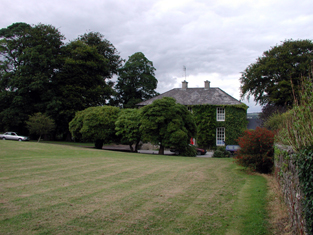
|
| Blenheim House | At the time of Griffith's Valuation, Robert Carroll was leasing this property from Eliza Ridgeway when it was valued at £20. It is still extant and occupied. It is named as Blenheim House on both the 6-inch and 25-inch Ordnance Survey maps though it now seems to be known as Blenheim Lodge. |
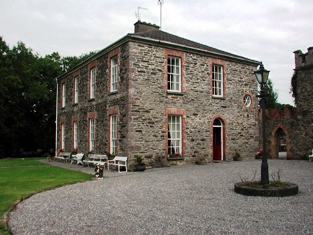
|
| Newport Corn Mill | Thomas and William Manning were leasing a house and extensive mill property from Simon Newport at the time of Griffith's Valuation. The complex was valued at £31. On the later 25-inch Ordnance Survey map it is labelled Brook Lodge Mill. It is no longer extant. | |
| Belmont House (Ballynakill) | Sir Samuel Roberts was leasing this property from Nicholas M. Power in 1848 when it was valued at £37 6s. In 1837, Lewis noted the property as the seat of J. Roberts. | |
| Rockview (Ballygunner) | In 1848, James Shannon was leasing this property from the Roberts estate when it was valued at £15 3s. The original house does not appear to be extant. | |
| Ballynakill House (Gaultiere) | Leased by Robinson Thomas from the Power estate in 1848, when it was valued at £42. In 1837 Lewis noted it as belonging to the Power family but "now occupied by a tenant". Leet records it as the residence of P. Power in 1814. Writing in 1774, Smith describes Ballynakill as "the agreeable seat of William Dobbyn". Brady notes that it incorporates the fabric of a medieval tower house. Ballynakill House is still extant and occupied. |
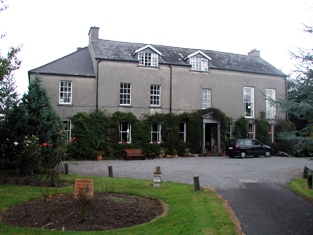
|
| Little Island Castle | At the time of Griffith's Valuation, this property was held in fee by John P. Fitzgerald, when it was valued at £25 10s. In 1837 Lewis had referred to the property as "the castle on the island owned by J. Fitzgerald". In 1906 it was the property of Gerald P. Fitzgerald and valued at £48 15s. The property remained in the Fitzgerald family until the mid twentieth century. It was turned into a luxury hotel in the 1990s. See www.waterfordcastle.com Fitzgerald was also the lessor of three other houses on the island, which were leased to members of the Grace and Power families. |
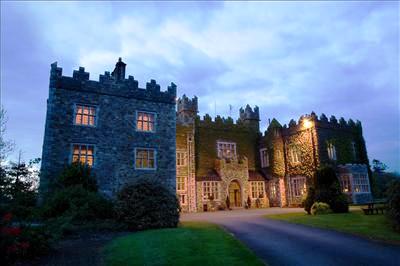
|
| Ballydavid House | Ballydavid House, Passage East, is given as the address of William Armstrong, JP, in the 1870s. At the time of Griffith's Valuation, this house was held in fee by Francis O'Beirne and valued at over £50. In 1814 Leet refers to Balydavid as the seat of Michael Kennedy. The 1945 ITA survey noted it as the residence of Lady Armstrong but formerly associated with the Armstrong and Paul families. There is still an extant house at the site. | |
| Crooke Villa | Leased by Captain William Clarke from Lord Waterford's estate in 1848 when it was valued at £12. It is named as Crooke Villa on both the First Edition and later 25-inch Ordnance Survey maps. Local sources suggest this house was originally built by the local parish priest, Fr. Hearn, at the end of the eighteenth century. There is still a house at the site. | |
| Rock Lodge (Gaultiere) | Andrew Meade was leasing this property from Lord Waterford's estate at the time of Griffith's Valuation, when it was valued at £14 12s. It is named Rock Lodge on both the First and latre 25-inch editions Ordnance Survey maps. A house is still extant at the site. | |
| Greenhill (Gaultiere) | Mrs. Mary Manning was leasing this property from Lord Waterford's estate at the time of Griffith's Valuation, when it was valued at £18 7s. It is named Greenhill on both the First and later 25-inch edition Ordnance Survey maps. The original house is no longer extant. | |
| Dromina House | At the time of Griffith's Valuation, in 1848, John Coghlan was leasing this property to Rev. Thomas Dixon, PP, when it was valued at £21. Lewis refers to it as the seat of T. Coghlan in 1837. Local sources suggest it was purchased by John Coghlan in the 1820s, having previously belonged to the Stevens family. It is still extant and occupied. In 2014 it was offered for sale. |

|
| Dromina Lodge | This property was held in fee by John Coghlan in 1848 when it was valued at almost £10. It is labelled "Dromina Lodge" on the 6-inch Ordnance Survey map but is not labelled on the 25-inch map of the 1890s. | |
| Newtown Geneva | In 1848, John Dobbyn was leasing the site known as Geneva Barracks from Lord Waterford's estate. The barracks is described as "in ruins" on the First edition six-inch Ordnance Survey Map of the 1840s. It had been constructed at a site originally intended for a colony of disaffected artisans from Geneva in Switzerland. When this plan was abandoned it was commissioned as a military barracks and used as a prison during the 1798 rebellion. The building was purchased by Lord Waterford in the 1820s. The ruins of a farmhouse as well as extensive perimeter walls remain at the site. |
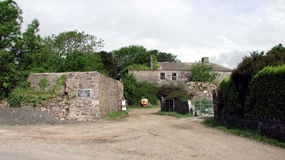
|
| Raheen (Gaultiere) | In 1848, Michael Nugent was leasing this property from Lord Waterford's estate when it was valued at £13. A house and farm still exist at the site though the original house does not appear to be extant. | |
| Daisybank House | In 1848, Patrick Tracy was leasing this property from the Power estate when it was valued at over £18. The National Inventory of Architectural Heritage suggests it was built in the later eighteenth century and served as a hotel during its long history. |
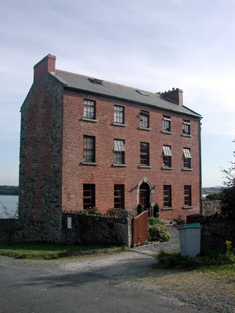
|
| Mighnawn Cottage | Labelled as Mighnawn Cottage on the 25-inch Ordnance Survey Map of the 1890s, this property was leased by Miss Mary Owens from the Power estate at the time of Griffith's Valuation. It was valued at £20 8s. | |
| Coolbunnia | In 1848, Margaret Cheasty was leasing this property from thel Power estate when it was valued at £10. The house is adjacent to the the site of Faithlegg Castle, the original stronghold of the Aylward family in the area. | |
| Faithlegg House | At the time of Griffith's Valuation, Faithlegg House was owned by Nicholas O'Neill Power and valued at £100. The lands in this area were originally held by the Aylward family after the Norman Conquest but they were dispossessed by Cromwellian forces in the 1650s. Faithlegg was then acquired by the Bolton family who eventually built the house in the eighteenth century. It was sold by them to the Power family in 1819. It was enlarged and extended under Power ownership and in 1906 was valued at £110. Faithlegg remained in the Power family until 1935 when it was sold to the De La Salle order who used it as a novitiate until the 1980s. It is now Faithlegg House Hotel. See www.faithlegg.com. |
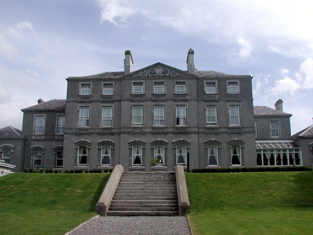
|
| Kilcullen | Edward Delahunty was leasing this property from Lord Waterford's estate in 1848 when it was valued at £10. An extensive farm still exists at the site. | |
| Harbour View (Kilcop) | Shapland Carew Morris held this property in fee at the time of Griffith's Valuation, when it was valued at over £32. Lewis also refers to it as the seat of Captain Morris in 1837. | |
| Kilcop House | John Coghlan[e] held this property in fee at the time of Griffith's Valuation, when it was valued at almost £36. Later the residence of Mrs. J.H. Bright. The 1945 ITA survey notes it as her residence and provides a description of the art works in the house at that time. | |
| Mount Beresford | In 1848 William Manning was leasing this property from Lord Waterford's estate when it was valued at almost £10. There is still an extant house at the site. Shaw Mason's "Parochial Survey" notes it as the seat of Mr. Maguire. A house is still extant at the site. | |
| Ballinkina | At the time of Griffith's Valuation, William Connolly, MD, was leasing this property from Lord Waterford's estate, when it was valued at over £15. Buildings are still extant at the site. | |
| Brooke Lodge | In 1848,Rev. Henry Bolton was leasing this property from Lord Waterford's estate when it was valued at over £29. The National Inventory of Architectural Heritage states that this house was built in the nineteenth century on the site of an earlier house owned by the Penrose family. It is still extant and occupied. |

|
| Woodland House | At the time of Griffith's Valuation, Michael Dobbyn was leasing Woodland House from Elizabeth Bolton, when it was valued at £22. The house thus labelled on the 1st-edition Ordnance Survey map was located a short distance away at S661113 but seems to have been superceded by this house by 1848. The National Inventory of Architectural Heritage notes that this house was sometimes used as a Dower house for Faithlegg House. In 1945 the ITA survey indicates it was the residence of Hubert Gallway. |
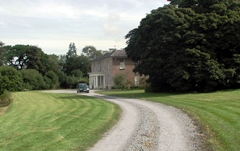
|
| Ballycanvan House | In 1848 George Kent was leasing this property from Eliza Bolton when it was valued at over £34. The demesne was included in the sale of Bolton property in June 1857. In 1814 Leet notes it as the seat of Samuel Roberts. The house was in ruins by the end of the twentieth century. | |
| Spring Hill (Gaultiere) | At the time of Griffith's Valuation, John Stephens was leasing this property from the Bolton estate when it was valued at £24 11s. Buildings, though perhaps not the original ones, are still extant at the site. | |
| Foxmount | In 1848, Matthew Fox was leasing this property to Edmund Flynn, when it was valued at £10. The Encumbered Estates Sale notice of 1856 indicates that the lands in this vicinity had previously been part of the Wilkinson estate. |
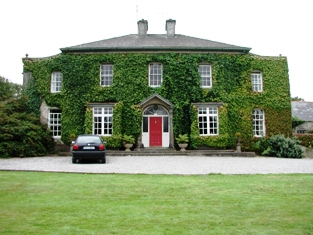
|
| Carriglea (Gaultiere) | Richard Phelan was leasing this property from Lord Waterford's estate at the time of Griffith's Valuation, when it was valued at £10 15s. It is no longer extant. | |
| Drumrusk House | At the time of Griffith's Valuation, Rev. John Lymberry was leasing this property from Michael Dobbyn when it was valued at £10. Lymbery offered the lands in this townland for sale in 1850 and the petitioner to the sale was Michael Dobbyn, jun. | |
| Parkswood House | Mrs. Eliza McDougall was leasing this property to Edward Strangman in 1848 when it was valued at £33. There is still an extant house where guest accommodation is provided. |

